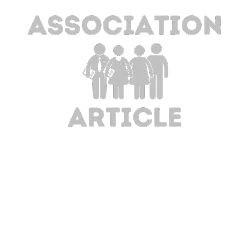News Digest: High Costs to Comply with Minimum Staffing Rule
Before CMS’ actual Proposed Rule for minimum staffing was issued in September 2023, researchers, consumer advocates, legislators and industry representatives estimated the potential costs that skilled facilities would incur to comply with a rule. Since the specifics of minimum staffing levels were not yet known, the cost estimates made many assumptions that created a wide variety of possibilities.
In addition, many presented opinions on possible funding sources to meet the expected higher costs.

AHCA & CliftonLarsonAllen Study the Cost of Minimum Staffing Proposals
The cost of staffing to meet a minimum staffing mandate is estimated to be between $3.8 billion and $11.3 billion, depending on the scenario. The CLA 37th Annual SNF Cost Comparison and Industry Trends report identified 7,741 out of 13,193 SNFs (59%) that had negative operating margins (excluding public health emergency funding). The additional burden of meeting minimum staffing requirements with no funding mechanism could potentially increase the number of facilities operating with negative margins.
In addition to the cost of meeting a staffing mandate, the SNF industry would need to hire between 58,000 and 191,000 additional full-time equivalents (FTEs). Although there have been improvements in workforce availability in some areas of the country, nationally SNFs are still challenged to find the appropriate workforce. Some facilities may need to reduce admissions or number of beds in a facility in order to meet staffing ratios.
Updated September 2023 | Updated December 2022 | Published July, 2022
“Staffing Mandate Analysis In-Depth Analysis on Minimum Nurse Staffing Levels and Local Impact.” CliftonLarsonAllen, 18 Jul. 2022, https://www.ahcancal.org/News-and-Communications/Fact-Sheets/FactSheets/CLA-Staffing-Mandate-Analysis.pdf

As forecast price of federal staffing mandate climbs to $11.7B, analysts offer alternatives
The price tag is going up on a potential federal staffing mandate.
A standard of 4.1 hours per patient per day could cost the skilled nursing sector $11.7 billion annually, according to an updated analysis by consulting and advisory firm CliftonLarsonAllen.
That’s up from a projected $11.3 billion in January, and an increase of $1.7 billion in the 13 months since CLA issued its first estimate in mid-2022.
The potential cost has been pushed higher by inflation and continued wage pressures, as the current staffing shortage continues to play out nationwide.
“People are starting to make the connection to say, if we implement the staffing mandate, that problem is going to get way worse,” said Cory Rutledge (pictured), chief assurance officer at CliftonLarsonAllen. “As we sit here today, less than 10% of skilled nursing facilities are at 4.1 hours per patient day. … There are really two levers to pull to get to a 4.1: You either hire a lot more people, which don’t exist … or you discharge residents to decrease the denominator.”
Marselas, Kimberly. “As Forecast Price of Federal Staffing Mandate Climbs to $11.7B, Analysts Offer Alternatives.” McKnight’s Long-Term Care News, 28 Aug. 2023, www.mcknights.com/news/as-forecast-price-of-federal-staffing-mandate-climbs-to-11-7b-analysts-offer-alternatives/. Accessed 2 Oct. 2023.

‘Worst Possible Time’: SNF Operators Hope for Acuity Adjustments, Waivers Ahead of Staffing Mandate
As the skilled nursing sector awaits the proposed federal staffing mandate, leading industry operators renewed calls for funding the initiative, and said the Centers for Medicare & Medicaid Services (CMS) should carry it out in phases while also adjusting staffing ratios based on the acuity of the resident populations being served.
Speaking at Skilled Nursing News’ Staffing Summit Thursday, operators said that they are continuing grassroots efforts to recruit and retain their workforce with a special focus on turnover, and also keeping up communication with policymakers. All agreed that while workforce numbers had improved, they were still a long way off from normalizing.
Mike Landi, COO for iCare Health Network, along with Gurwin Healthcare System CEO Stuart Almer and Laurel Lingle, vice president of talent acquisition at Majestic Care, participated in the Summit.
June 23, 2023
Stulick, Amy. “‘Worst Possible Time’: SNF Operators Hope for Acuity Adjustments, Waivers Ahead of Staffing Mandate.” Skilled Nursing News, June 2023, skillednursingnews.com/2023/06/worst-possible-time-snf-operators-hope-for-acuity-adjustments-waivers-ahead-of-staffing-mandate.

A loud and clear message on staffing mandates
We’ve heard a lot of chatter about nursing home staffing mandates in the last few months.
In one corner, we’ve got consumers and union reps angry that local ratios for skilled nursing facilities haven’t been enacted or enforced yet. Forget that state officials have backed off the very laws they championed in acknowledgment of the fact that, in some places, there is simply no one to hire.4
Then entering the ring, we had a bipartisan group of senators from mostly rural states call on the Centers for Medicare & Medicaid Services to press pause on its expected proposal to institute nationwide minimums.
LeadingAge President and CEO Katie Smith Sloan delivered a gift of sorts to the agency on Monday in the form of a six-point “common sense” plan for implementation of any staffing minimum.
The key message here cuts through the doldrums: To implement a wise and effective mandate, CMS must work with Congress and providers to get both the timing and the funding right.
January 31, 2023
Marselas, Kimberly. “A Loud and Clear Message on Staffing Mandates.” McKnight’s Long-Term Care News, 31 Jan. 2023, www.mcknights.com/daily-editors-notes/a-loud-and-clear-message-on-staffing-mandates.

Defiant Sloan to nursing home critics: Address funding to tackle staffing challenge
The leader of one of the nation’s largest skilled nursing organizations Tuesday pushed back against a recent popular narrative about understaffing, reiterating concerns about Medicaid pay that continues to undercut provider efforts to recruit and retain workers.
“Medicaid is woefully inadequate in every state, doesn’t cover the cost of care, and when you are not covering the cost of care, you’re not enabling the provider to pay their staff what they should be paid,” LeadingAge CEO and President Katie Smith Sloan told McKnight’s Long-Term Care News Tuesday.
“We’ve been advocating for quite a while the importance of reimbursing so that nursing homes can pay a livable wage to their staff so they don’t have to work two jobs. Until we address the funding issue we will continue to be challenged.”
Sloan’s comments came days after a USA Today investigation into nursing home staffing levels drew swift rebukes from other nursing home providers groups, who called the coverage unfair, reliant on the wrong policies and woefully lacking in nuance.
December 7, 2022
Bush, Joe. “Defiant Sloan to Nursing Home Critics: Address Funding to Tackle Staffing Challenge.” McKnight’s Long-Term Care News, 7 Dec. 2022, www.mcknights.com/news/defiant-sloan-to-nursing-home-critics-address-funding-to-tackle-staffing-challenge.

Providers, states grapple with billion-dollar needs ahead of federal staffing minimum
Worries about the cost of a potential nursing home staffing mandate are mounting among provider organizations across the country as more try to pinpoint just how much of an investment they’ll need to meet new requirements.
In Pennsylvania, which has 681 nursing homes, it could cost providers more than $360 million more annually to staff at 4.1 hours per patient day, using calculations modeled on a 4.1-hour staffing rule adopted by Washington, DC, in 2012.
That was the staggering assessment Jonathan Hansen, a principal in CliftonLarsonAllen’s Baltimore office, delivered to attendees at the LeadingAge Pennsylvania finance conference Tuesday.
Earlier this year, CliftonLarsonAllen conducted a study on behalf of the American Health Care Association and estimated providers would have to spend an additional $10 billion more per year nationally and hire more than 187,000 new workers to meet requirements of a 4.1 hour standard.
November 17, 2022
Kimberly Marselas. “Providers, States Grapple With Billion-dollar Needs Ahead of Federal Staffing Minimum.” McKnight’s Long-Term Care News, 17 Nov. 2022, www.mcknights.com/news/128995.


